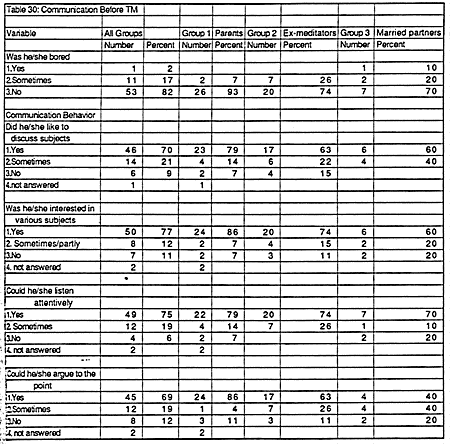
It is a centuries-old practice to heal by sound. Many cultures use it, including the Greeks and Hindus as well as Aborigines. Actually, music and sounds are as old as the world. The ancient Greeks used instruments like flutes and lyres to help them heal their patients. Native Americans use didgeridoos, shamanic drums, and didgeridoos in order to enhance the healing process. Sanskrit mantras are a way to improve health and well-being. The 20th century saw the re-discovery and use of sound healing. In World War II, wounded soldiers used music therapy. The invention of ultrasounds allowed sound and music to be mainstreamed in medicine. This method is used to evaluate the internal organs as well as soft tissues.
Sound baths are ceremonial immersions in a calming and relaxing musical atmosphere. They can be performed in groups or individually and are a great way for people to relax and get rid of stress. Scientists believe stress causes cells to lose their cohesiveness. It can feel pain, insomnia, or depression when the body is not in sync. Healing with sound can help restore harmony and balance to the body.

It is an ancient technology, but sound has recently been incorporated in modern science. Scientists have shown that certain sound frequencies have positive effects on the brain and body. Tuning forks or singing bowls produce low-frequency sounds that can increase blood circulation, decrease inflammation, and lower pain. It has many benefits for our health. But, is it really that effective? This question needs to be answered.
Sessions with sound healing are more individual. These sessions include an introduction conversation with the counselor and a nurturing setting. The therapist may also offer breathing exercises that can help deepen and increase our energy flow. Sound healing can have a positive impact in your life, according to those who have tried it. You can heal with sound, no matter if you are looking for a boost or vent. It will provide a powerful experience.
Using sound therapy has been used for thousands of years. It has been used as a way to help treat mental disorders and boost productivity. People have even been cured of autism by listening to music. This practice can have life-altering benefits. If you're suffering from a mental health condition, try sound therapy. It can have profound results. You'll be amazed by the many benefits of this ancient technique. You will feel better and more alert when you use this powerful tool.

The use of sound in healing is not new. Aboriginal people have used sound and music to promote good health for many centuries. The didgeridoo was used to heal injuries. Its vibrations stimulate the brainwaves into a deep state relaxation and allow them to settle. The delta and theta states are the most relaxing states of consciousness. These states are conducive to healing and can lead to homeostas.
FAQ
How do you get enough vitamins?
Most of your daily vitamin requirements can be met by diet alone. Supplements are an option if you are low in any vitamin. A multivitamin supplement can provide all the vitamins you require. You can also buy individual vitamins in your local drugstore.
Talk to your doctor if there are any concerns about getting enough nutrients. Dark green leafy vegetables like spinach, broccoli and kale, as well as turnip greens and mustard greens such as turnip and mustard greens and bok choy, are rich in vitamins K & E.
Ask your doctor for advice if you are unsure how much vitamin to take. He or she will recommend the appropriate dosage based on your medical history and current health status.
How can I live the best life possible every day?
The first step towards living your best life everyday is to find out what makes you happy. Once you know what makes you happy, you can work backwards from there. You can also inquire about the lives of others.
You can also find books such as "How to Live Your Best Life" written by Dr. Wayne Dyer. He discusses happiness and fulfillment in every aspect of our lives.
What are 7 tips for a healthy and happy life?
-
Eat right
-
Exercise regularly
-
Sleep well
-
Make sure to drink plenty of water.
-
Get enough rest
-
Happy!
-
Smile often
What is the best diet for me?
Your age, gender, body type, and lifestyle choices will all impact the best diet. It is also important to think about how much energy you use during exercise and whether you like low-calorie foods.
Intermittent fasting is a good option if you're trying to lose weight. Intermittent Fasting means that you eat only specific meals throughout your day and not three large meals. This method may work better than traditional diets which include daily calorie counts.
Intermittent fasting has been shown to improve insulin sensitivity, reduce inflammation and lower the risk of developing diabetes. Research suggests that intermittent fasting can promote fat loss and improve overall body composition.
Statistics
- nutrients.[17]X Research sourceWhole grains to try include: 100% whole wheat pasta and bread, brown rice, whole grain oats, farro, millet, quinoa, and barley. (wikihow.com)
- WHO recommends reducing saturated fats to less than 10% of total energy intake; reducing trans-fats to less than 1% of total energy intake; and replacing both saturated fats and trans-fats to unsaturated fats. (who.int)
- This article received 11 testimonials and 86% of readers who voted found it helpful, earning it our reader-approved status. (wikihow.com)
- The Dietary Guidelines for Americans recommend keeping added sugar intake below 10% of your daily calorie intake, while the World Health Organization recommends slashing added sugars to 5% or less of your daily calories for optimal health (59Trusted (healthline.com)
External Links
How To
What does the term "vitamins" mean?
Vitamins are organic substances found naturally in food. Vitamins aid us in absorbing nutrients from the food we eat. The body cannot make vitamins; therefore, they must be obtained from food.
There are two types if vitamins: water soluble, and fat soluble. Water soluble vitamins dissolve easily in water. Examples include vitamin C,B1 (thiamine), B2 (riboflavin), B3 (niacin), B6 (pyridoxine), folic acid, biotin, pantothenic acid, and choline. Fat-soluble vitamins are stored in the liver, fatty tissue and kidneys. These include vitamin D, E and K, as well as beta carotene.
Vitamins are classified according their biological activity. There are eight major groups of vitamins:
-
A - Vital for normal growth and maintaining good health.
-
C - essential for nerve function and energy generation.
-
D - essential for healthy bones, teeth, and gums.
-
E - needed for good vision and reproduction.
-
K - Essential for healthy muscles and nerves.
-
P – vital for building strong bones.
-
Q - aids digestion, absorption and absorption iron
-
R – Required for the formation of red blood vessels.
The recommended daily intake (RDA), of vitamins varies with age, gender and physical condition. RDA values are set by the U.S. Food and Drug Administration (FDA).
For adults over 19 years, the RDA is 400 mg per day for vitamin A. However, pregnant women need 600 micrograms per day because it is important for fetal development. Children ages 1-8 require 900 micrograms per day. Infants under one year of age require 700 micrograms per day, but this amount decreases to 500 micrograms per day between 9 months and 12 months of age.
Children between the ages 1--18 years old who are overweight or obese require 800 micrograms per Day, while those who are overweight or obese need 1000 micrograms. To meet their nutritional needs, children underweight and obese require 1200 micrograms a day.
Children between 4 and 8 years old with anemia will need 2200 micrograms daily of vitamin C.
2000 micrograms is the minimum daily intake for adults over 50 years old to maintain good health. Due to their increased nutrient needs, pregnant and breastfeeding women need 3000 micrograms daily.
Adults over 70 require 1500 micrograms each day, since they lose around 10% of their muscle mass every decade.
Women who are pregnant, nursing or breastfeeding need more than the RDA. Pregnant women require 4000 micrograms daily during pregnancy, and 2500 micrograms every day after birth. Breastfeeding mothers require 5000 micrograms daily when breast milk production is occurring.